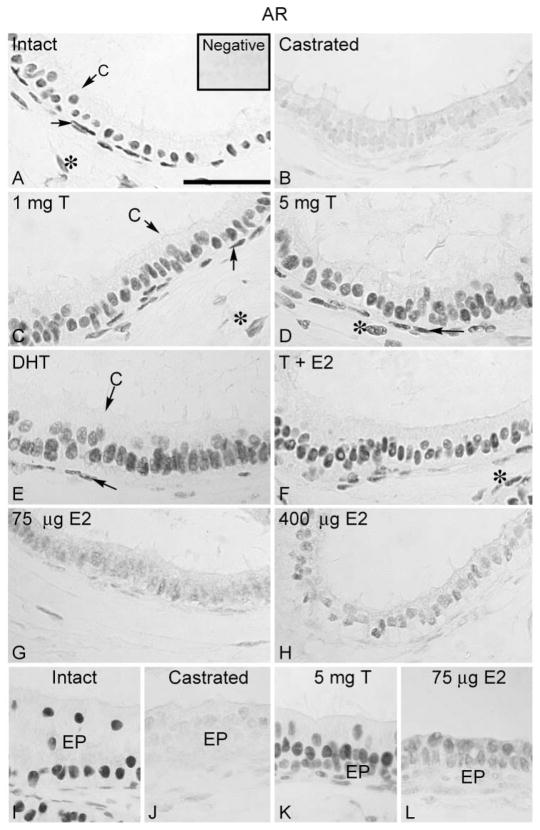Figure 2.
Regulation of AR in the efferent ductule of rat. (A) AR was intensely expressed in the nuclei of the efferent ductule epithelial, peritubular (arrow) and some stromal cells (*) of intact control rats. C, ciliated cell. Insert represents the negative control. (B) After castration, there was a dramatic decrease in the AR expression in the efferent ductule. Replacement with (C) 1 mg testosterone (T), (D) 5 mg testosterone, (E) 5 mg DHT, as well as (F) 5 mg testosterone associated with 400 μg estradiol (E2) restored AR immunostaining to the control levels. A slight recovery of AR staining was observed after estradiol (75 μg and 400 μg) replacement in the efferent ductules (G, H). The initial segment of the epididymis (EP) was positive for AR (I). The AR staining decreased after castration (J), but testosterone replacement restored the positive reaction (K). Estradiol replacement also induced a slight recovery of AR staining in the initial segment (L). The results regarding the efferent ductule of sham-operated, unilateral or bilateral ligated and unilateral castrated rats were similar to those of intact controls (not shown). Bar = 100 μm.

